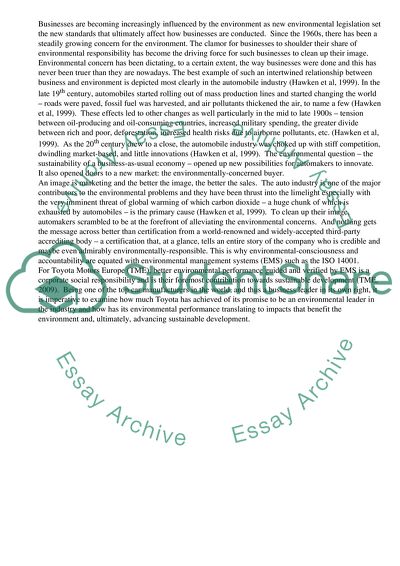Cite this document
(Toyota Motors Europe - an Environmentally-Responsible Business Coursework - 1, n.d.)
Toyota Motors Europe - an Environmentally-Responsible Business Coursework - 1. Retrieved from https://studentshare.org/business/1736127-environmentally-sustainable-business-assignment
Toyota Motors Europe - an Environmentally-Responsible Business Coursework - 1. Retrieved from https://studentshare.org/business/1736127-environmentally-sustainable-business-assignment
(Toyota Motors Europe - an Environmentally-Responsible Business Coursework - 1)
Toyota Motors Europe - an Environmentally-Responsible Business Coursework - 1. https://studentshare.org/business/1736127-environmentally-sustainable-business-assignment.
Toyota Motors Europe - an Environmentally-Responsible Business Coursework - 1. https://studentshare.org/business/1736127-environmentally-sustainable-business-assignment.
“Toyota Motors Europe - an Environmentally-Responsible Business Coursework - 1”, n.d. https://studentshare.org/business/1736127-environmentally-sustainable-business-assignment.


